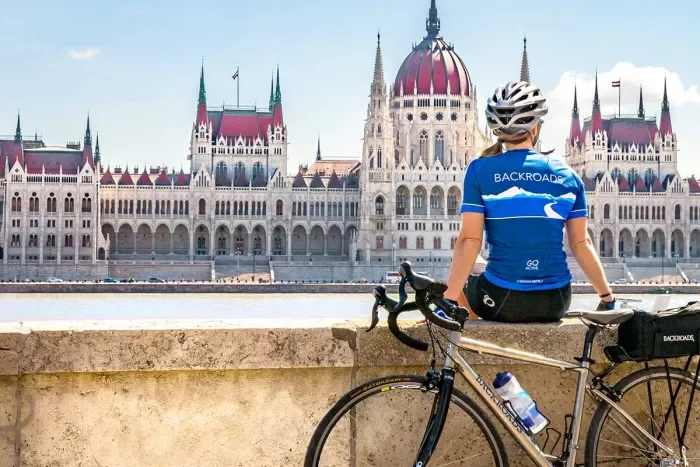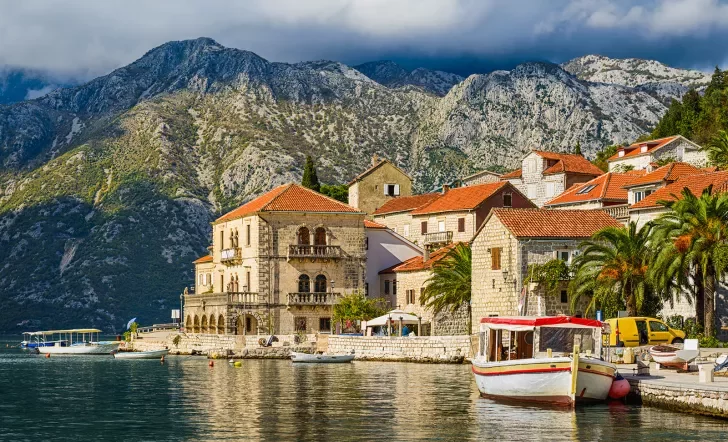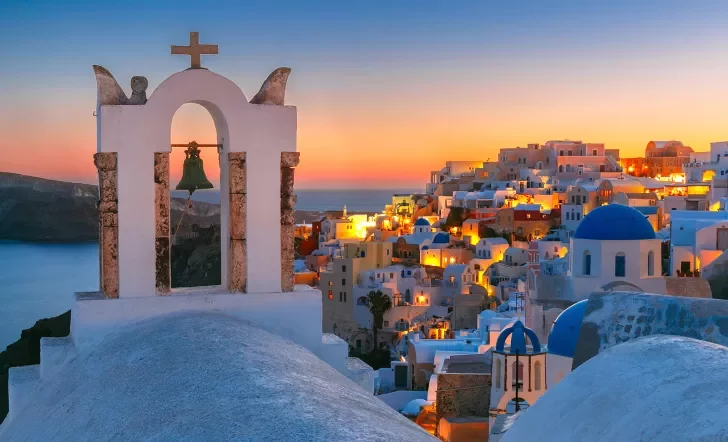With such a rich cultural (and ecological) landscape, Europe is the ideal starting point for multiple-country trips. Containing everywhere from Denmark to Slovenia, Europe is hard to group into a single category, particularly when it comes to travel plans. While many European countries are known for their sandy beaches and warm, clear waters (think Italy and Portugal), others are known for their dramatic landscapes (Iceland and Switzerland) or fascinating cultures (Poland and Czech Republic). Whether you dream of hiking the Swiss Alps or wine tasting in Provence, Europe promises adventure for every type of traveler.

- Weather in Europe
- Ecological Events and Features
- Special Events
- Crowds
- Adventure
- Travel to Europe with Backroads
Weather in Europe
(All temperatures quoted are in Fahrenheit.)
Spring
Depending on the country or region, early spring in Europe varies dramatically. Southern Italy, for example, might be fairly pleasant in April, reaching temperatures of 65 degrees and above, while Iceland is still quite chilly even in May. As a general rule, the farther south (and closer to Africa) you go, the warmer the weather will be, but always make sure to check the forecast in advance and to pack accordingly.
Summer
Most of Europe is relatively pleasant in the summer, and the countries that do experience intense heat are often complemented by world-class beaches. It’s best to visit these warmer regions in May before the weather heats up or later in the fall after things have started to simmer down. In mid-July, northern countries, such as Sweden and Finland, average temperatures around 70–75 degrees, while Greece, Turkey and Spain might be closer to 80 or 90.
Fall
Fairly pleasant across all regions, early fall is a great time to visit Europe. Particularly consider late September or early October after crowds have begun to subside. France, Croatia and the Netherlands are all great destinations this time of year, averaging temperatures of 60 degrees and above.
Winter
Though outdoor adventure might be fairly limited in the winter, December through February is still a great time to visit Europe. Skiing, snowshoeing and winter hiking are all popular pastimes for active visitors, especially in Switzerland, France and Austria. If scenic train rides and bustling holiday markets are more your cup of tea, consider visiting Germany, Poland or the United Kingdom. A few areas that remain relatively warm all winter are Greece, southern Portugal and southern Spain.
Ecological Events and Features
Keukenhof, Netherlands (March–May)
Part ecological and part cultural, Holland’s Keukenhof is one of the world’s largest flower gardens. More than seven million bulbs bloom between mid-March and mid-May each year, and an annual flower parade in April celebrates this event. Situated on 15th-century hunting grounds (along with a castle), the garden is spread across approximately 80 acres and is worth a day-trip for those passing through the Netherlands in the spring.
Northern Lights (October–April)
Whether you’re traveling to Iceland or northern Scandinavia, you’re in luck. From late fall to early spring, the aurora borealis is in season, meaning you can sit under the stars and blissfully admire the natural light display up close. Though the northern lights technically occur year-round, long daylight hours obstruct views for part of the year. The darker it is, the better, leaving the best time to witness the spectacle in the midwinter months.
Rivers (Year-Round)
Europe is home to hundreds of rivers, five of which are considered the continent’s major waterways: the Danube, Loire, Rhine, Volga and Elbe. These main rivers connect more than 20 countries, giving travelers easy access to most of Europe when traveling by boat. River cruises are becoming a more popular mode of travel and are ideal for those who prefer multiple-country trips with minimal planning. Kayaking and white water rafting are also popular river activities throughout Europe, when the weather permits.
Special Events
More than 40 countries on one continent means more than 40 different cultures, leading to an assortment of authentic, one-of-a-kind events. From celebrating the longest day of the year in Sweden to experiencing Spain’s running of the bulls, the distinctive festivities that take place across Europe each year are rich in both culture and tradition.
Carnival, Venice, Italy (February)
This annual festival takes place for two weeks in February each year, starting about two weeks before Ash Wednesday and ending just in time to kick off Christian Lent. Primarily known for its elaborate masks and costumes, Venice’s Carnevale also boasts a water parade, firework show, street performances and plenty of food stalls.
Midsummer, Sweden (June)
One of the more underrated European events, Midsummer celebrations take place in late June every year to celebrate the summer solstice. A deeply engrained Swedish tradition, Midsummer festivities often consist of maypoles, ring dances, flower crowns and (of course) pickled herring. The best part? Nearly 24 hours of sunshine.
The Festival of San Fermín, Pamplona, Spain (July)
Known primarily for the infamous running of the bulls, San Fermín is a week-long festival that takes place in Pamplona each July. Flamenco dancing, fireworks, fairs and markets are just a few of the attractions—all of which are accompanied by the daily bull chase (also known as encierro). The parade takes place on July 7, and it honors Saint Fermin, Spain’s first bishop.
Oktoberfest, Munich, Germany (September–October)
A necessity for those visiting Munich in September, Oktoberfest is a two-week folk festival that attracts around six million people each year. Parades, music, Bavarian food and locals in lederhosen are some of the many delights visitors can experience, all of which are accompanied by a never-ending supply of beer. Just make sure to make arrangements in advance and to arrive early.
Advent Markets (November–December)
From Brussels to Edinburgh, a number of large European cities have famous Christmas markets starting in mid-November. Strasbourg, Munich, Prague and Vienna continue to host some of the most celebrated markets, while small towns in Germany, Italy and Switzerland have charming Advent celebrations as well.
Backroads Pro Tip
If you enjoy cultural experiences but crowds aren’t your scene, consider finding small-town alternatives to some of your favorite events. For example, Oktoberfest’s six million attendees can be overwhelming, so why not attend Belgian Beer Weekend or Altausseer Bierzelt in Austria instead? A number of lesser-known events, such as iron-forging festivals in Slovenia and Portugal’s NOS Alive music festival, are also worth digging into.
Crowds
Throughout most of Europe, tourist season peaks between June and September. Big holidays, such as Christmas and Easter, are also popular travel times for most Europeans, meaning you might see a spike in crowds during those weeks as well.
To avoid big crowds, consider visiting warmer countries, such as Italy or Croatia, in the shoulder seasons (April–May and October–November). Snow bunnies should consider visiting countries like Germany, Austria and Switzerland right after the big holidays (Christmas and New Year). Prices will likely start to drop during those times, and most Europeans will be returning home from vacation.
Backroads Pro Tip
If avoiding crowds is a priority for you, make sure you look up European holidays in advance. For example, late spring might seem like a less popular time to visit Finland, but one of the country’s largest national holidays, Vappu, takes place from April 30 to May 1 each year. Each country has its own national holidays, so it’s a smart move to look up each destination before you visit. This is not only useful for avoiding crowds but for saving money as well.
Adventure
Biking
Whether you dream of the limestone peaks of the Dolomites or would prefer to pedal along fields in the Netherlands, Europe’s landscape is varied enough to cater to almost every level of biker. In many European countries, biking is a year-round activity. Italy, England, Austria, Germany and many Slavic countries, for example, are all home to scenic bike routes.
Hiking and Walking
Though nearly every European country is fit for hiking, some countries maintain more famous routes than others. Switzerland, Iceland and Norway are a few of Europe’s top hiking destinations, while Croatia and Greece are perfect for laid-back seaside strolls. The Camino de Santiago, Tour du Mont Blanc and Cinque Terre Mountain Trail remain some of Europe’s most notable treks.
Kayaking
Like many outdoor activities, when it comes to kayaking, understanding differences in regions and seasonality is key. Croatia, Italy and Portugal are all home to popular sea kayaking routes (when the weather permits). A number of scenic lakes and rivers are also worth exploring by boat, including the Danube and Lake Bled.
Travel to Europe with Backroads
Backroads offers numerous ways to experience the very best of Europe on our award-winning active travel adventures. Explore the continent in the best and most genuine way possible—away from the crowds, buses and tourist hot spots. We hope you'll join us! Check out our full list of Europe adventures here.
Want to learn more about Europe, including its history, travel tips, highlights and insider info?
Check out our full Europe Travel Guide!






